- Register
- Log in to Tune-In
- Wishlist (0)
-
Shopping cart
(0)
You have no items in your shopping cart.
Beatles News

Jane Asher met the Beatles on April 18, 1963, at the Royal Albert Hall. The band had exploded onto the scene after their second single, Please Please Me, topped the charts that January, followed by three more singles and the album of the same name. Jane was only 17 but she was already famous herself as a child star and young actress in films like The Prince and the Pauper and television's Robin Hood series. She was also a panelist on the BBC's hugely popular and influential Juke Box Jury, which rated new music releases. She had already caught Paul's eye.
Paul later said: "I met Jane Asher when she was sent by the Radio Times to cover a concert we were in at the Royal Albert Hall – we had a photo taken with her for the magazine and we all fancied her.
"We’d thought she was blonde, because we had only ever seen her on black-and-white telly doing Juke Box Jury, but she turned out to be a redhead. So it was: ‘Wow, you’re a redhead!’
"I tried pulling her, succeeded, and we were boyfriend and girlfriend for quite a long time."
Source: Stefan Kyriazis/express.co.uk
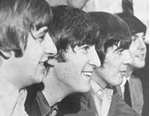
The members of The Beatles were more than just bandmates, their relationships with one another were more like that of brothers.
The band’s drummer Ringo Starr recalled decades after John Lennon’s death the surprise and emotion he felt at hearing the voice of his old friend speaking directly to him on a recording Starr hadn’t been aware of.
Lennon wrote ‘Grow Old With Me’
Recorded a month before Lennon was gunned down in front of his New York City home in 1980, “Grow Old With Me” was eventually released on a posthumous Lennon album called Milk and Honey.
The album also featured two songs that received abundant radio airplay: “Nobody Told Me” and “I’m Steppin’ Out.”
The song’s opening lines are ‘Grow old along with me / The best is yet to be,’ quoted from poet Robert Browning’s 1864 work “Rabbi ben Ezra.”
Rolling Stone in a review of the album stated that Lennon’s widow Yoko Ono’s liner notes “consciously adopted the image of [the Lennons] as the reincarnation of Victorian poets Elizabeth Barrett Browning and Robert Browning for Milk and Honey.”
details
Letters and memorabilia from The Beatles’ time in Hamburg are set to go up for auction in London next month.
The iconic band played over 250 shows in the German city between August 1960 and December 1962, with their time gigging and some of the relationships they formed there helping to propel them to fame in the UK and beyond.
The new auction lot will include previously unseen letters, work permits, photos, drawings, poems and more. Some of the items were sent by the band to photographer Astrid Kirchherr, who was engaged to former Beatle Stuart Sutcliffe after meeting them in Hamburg.
The group were close with Kirchherr and wrote to her when they were back in the UK. In one letter that is going up for auction, George Harrison invited her to visit him and Ringo Starr in their new flat and instructed her not to put his name on the envelope when she wrote back.
Source: Rhian Daly/nme.com
details
It was the city that made the Beatles. Not Liverpool, but Hamburg, the north German seaport where, between August 1960 and October 1962, the group played more than they ever did at the Cavern in their home city.
Sixty years on, previously unseen letters, work permits and photos have been unearthed about the band’s time in Germany and their relationship with Astrid Kirchherr, the photographer best known for her stark black-and-white portraits of the Beatles taken in Hamburg before they were famous.
Letters to Kirchherr – who is credited with influencing the group’s style and signature “mop-top” haircuts – include one from George Harrison inviting her to London “to make him tea and give him cornflakes” and one from John Lennon, who mentions their just-released first single, Love Me Do, writing modestly: “It’s quite good but not good enough.”
Source: Richard Brooks/theguardian.com
details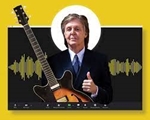
Students 0n the class Zoom call could barely believe their eyes. Some gasped. Others cheered. A few started crying tears of joy.
“IS THIS REAL?” asked Glenna Jane Galarion ’21 in the Zoom chat, as Sir Paul McCartney logged onto the Princeton Atelier course “How to Write a Song.” The students had the rare opportunity to have their work critiqued by the legendary Beatles musician and songwriter when McCartney, calling from New York, joined their virtual classroom in February.
“When we started listening to [my group’s] song, Paul McCartney started bobbing his head,” Galarion told PAW. “And I thought, ‘No way is Paul McCartney, the greatest songwriter in music history, grooving to our song right now!’”
“How to Write a Song,” taught by poet and Princeton creative writing professor Paul Muldoon, has been offered at Princeton in various forms since 2010. Bridget Kearney, a songwriter and bassist for the band Lake Street Dive and a former guest artist in the course, is co-teaching with Muldoon this year.
Source: By Anna Allport ’23/paw.princeton.edu

The Beatles were so big they inspired a parody movie called The Rutles, also known as All You Need Is Cash and The Rutles: All You Need Is Cash. Subsequently, George Harrison revealed what he thought of the film. Here’s a look at The Rutles, a Beatles parody band, and how the world reacted to it.
In 1978, The Beatles’ story was so well-known it inspired a film that spoofed every aspect of it: The Rutles. It features jokes about everything from Yoko Ono to Yellow Submarine to “Get Back.” Part of what makes the film interesting is that it includes members of the Monty Python comedy troupe, specifically Eric Idle and Michael Palin. In addition, George appears in the film as an interviewer.
During a 1979 interview with Rolling Stone, Mick Brown asked George if Idle consulted him during the making of The Rutles. “Yes,” George said. “I slipped him the odd movie here and there that nobody had seen, so he could have more to draw from. I loved The Rutles because, in the end, The Beatles for The Beatles is just tiresome; it needs to be deflated a bit, and I loved the idea of The Rutles taking that burden off us in a way. Everything can be seen as comedy, and the Fab Four are no ex details
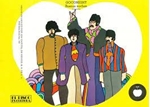
It’s the buoyant aquatic jam on Abbey Road: Ringo Starr’s final contribution to The Beatles’ oeuvre, an upbeat and cheerful dedication to cephalopod habitats and love without bounds that gently rises and falls with cascading guitars and charming melodies. It’s been covered by The Muppets three times, it has its own children’s book (written by Starr himself and published in 2014), and in (500) Days of Summer, Zooey Deschanel’s character Summer Finn calls it “the greatest Beatles song ever.”
Simply put, “Octopus’s Garden” is ubiquitous: One of The Beatles’ most iconic, if not also one of their most unique contributions to the modern songbook.
But what inspired this unabridged underwater immersion into the mysterious and oft unforgiving sea world? What sparked The Beatles’ unfiltered embrace of octopedal life? To find out, Atwood Magazine‘s investigative team dove deep into the hazy annals of the late 1960s – and what we discovered may shock you.
Source: Mitch Mosk/atwoodmagazine.com
details
John Waite is a very deep and spiritual man. He has a new box set coming out called "Wooden Hearts." Actually each of the three volumes are already released as well. It was the lockdown that caused Waite to go back into the studio and finish the "Wooden Hearts" series.
John Waite is a very deep and spiritual man. He has a new box set coming out called "Wooden Hearts." Actually, each of the three volumes are already released as well. It was the lockdown that caused Waite to go back into the studio and finish the Wooden Hearts series. One of the songs "Downtown" was co-written with Jersey's own Glen Burtnik.
One great line Waite uttered in our phone conversation which sums up where he right now, "I don't need a headlight in all this darkness, I know exactly where I'm going."
Source: New Jersey 101.5
details

Whether you’re a John Lennon or a Paul McCartney fan, The Beatles wouldn’t have been the same without the four famous members. Each musician contributed their own unique sound and talent to the rock and roll band, together creating countless top hits during the 1960s and '70s that are still popular today. Each member had instruments they preferred to play, but all of them loved to sing. Lennon, McCartney, George Harrison, and Ringo Starr are all credited as lead singers of the band having each recorded vocals for various tracks.
For their song titled “Something,” Harrison and McCartney recorded particularly beautiful harmonies. A recently released recording reveals how their voices sound isolated—without the instrumental track. You can hear Harrison belt out the song’s famous lyrics, “Something in the way she moves” with rich clarity. Then, McCartney complements Harrison in various parts of the tune by singing with him in harmony. Both Beatles sound particularly powerful in their raw form; you can really hear the emotion in their voices.

This week in 1964, The Beatles had the top five songs on the Billboard Top 100 with "Can't Buy Me Love" at No. 1, followed by "Twist and Shout", "She Loves You," "I Want to Hold Your Hand" and "Please Please Me."
Seven other Fab Four songs were on the Top 100 during the first week of April.
Sudbury.com invites readers to share their Beatle-related memories and stories of how their music became the soundtrack to their lives for a follow-up story April 13.
If you are a senior citizen, born between 1940 and 1960, you probably remember watching The Beatles' first appearance in North America on The Ed Sullivan Show on Feb. 9, 1964.
The Sullivan show began to broadcast in colour the following week, so record-breaking audiences were treated to John Lennon, Paul McCartney, George Harrison and Ringo Starr in living colour for their second performance Feb. 16.
The band performed a third time on the variety show Feb. 23.
Source: Vicki Gilhula/sudbury.com
details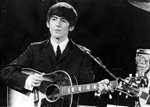
The Beatles’ George Harrison made some of his most famous music during the 1970s, however, he wasn’t a fan of one of the 1970s defining trends: punk rock. He openly criticized both punk rock as a whole and the Sex Pistols in particular. Here’s a look at how whether the Sex Pistols were more successful than George as a solo artist.During a 1979 interview with Rolling Stone’s Mick Brown, George discussed his feeling on some current artists. When asked about the artists he listened to at the time, he cited Bob Dylan, Elton John, and Eric Clapton. He also commented on the then-new genre of punk rock, saying he disliked it because he preferred songs with melodies. In addition, he felt punk rock drummers lacked talent, unlike the drummers of early rock ‘n’ roll bands.Subsequently, he derided the Sex Pistols. “I felt very sorry when the Sex Pistols were on television and one of them was saying, ‘We’re educated to go into the factories and work on assembly lines…’ and that’s their future. It is awful, and it’s especially awful that it should come out of England, because England is continually going through depression; it’s a very negative country.&rdqu details
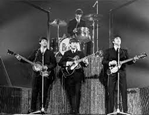
Even though it’s been nearly 60 years since The Beatles first set foot on Ed Sullivan’s show stage, the “four lads who shook the world” are still as popular today as they were that day in 1964 – perhaps even more so.
One of the band’s surviving members, drummer Ringo Starr that is, feels there are specific albums that its youngest new fans would do well to be exposed to first.
Now at 80 years of age, Starr is the eldest Beatle statesman. The former Beatle drummer marked his birthday in 2020 with, naturally, a distanced virtual party, as he told Rolling Stone at the time.
“I love birthdays,” Starr said. “This year is going to be a little different. There’s no big get-together, there’s no brunch for 100. But we’re putting this show together – an hour of music and chat. It’s quite a big birthday.”
Source: cheatsheet.com
details
In 1964, South American fans eagerly awaited the arrival of the Fab Four – but four Americans named Tom, Vic, Bill and Dave turned up instead. It’s a bizarre story of a con gone wrong, writes Ed Prideaux.Early in 1964, as Beatlemania swept the world, newspaper headlines announced that The Beatles would be travelling to South America later that year. Millions awaited their arrival with bated breath – and in July, when four young moptops descended into Buenos Aires Airport, it seemed that teenage dreams were about to come true.The Beatles were actually nowhere near Argentina at the time. The British group – who split 50 years ago this month – were back home in London, on a rare rest stop between concerts and recording. But with or without their knowledge, four young guys from Florida named Tom, Vic, Bill and Dave had taken their place.
Source: Ed Prideaux
details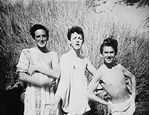
A letter in which Paul McCartney settled a long-standing “debt” from before he achieved worldwide fame with The Beatles is to be auctioned.
In 1958, McCartney and George Harrison went on a hitchhiking holiday and visited the seaside resort of Harlech, in Gwynedd, North Wales, known for its castle and the song Men Of Harlech.
They knocked on the door of a farmhouse belonging to the Brierley family and were allowed to pitch their tent in the field at the rear of their bungalow.
After a downpour on their first night, the pair sought refuge in the farmhouse and ended up staying the week.
McCartney and Harrison became friendly with the young John Brierley, a musician himself, and later sat in with his local skiffle group The Vikings during a performance at the Queen’s Hotel pub in the village.
Source: theguideliverpool.com
details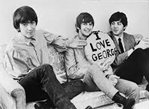
The Beatles put many of their best songs on the White Album, however, not all of the tracks meant for it made the cut. For example, George Harrison wrote a song he liked a lot that was never included on the White Album. In addition, he liked the song a lot before forgetting about it. Here’s a look at how the world reacted to the song once George finally released it.
In 1979, George did an interview with Rolling Stone’s Mick Brown. Wenner asked George about his self-titled album, including the song “Not Guilty.” Wenner thought George intended “Not Guilty” as an attack on his critics.
“Actually, I wrote that in 1968,” George said. “It was after we got back from Rishikesh in the Himalayas on the Maharishi trip, and it was for the White Album. We recorded it but we didn’t get it down right or something. Then I forgot all about it until a year ago, when I found this old demo I’d made in the ‘60s.”
Source: cheatsheet.com
details